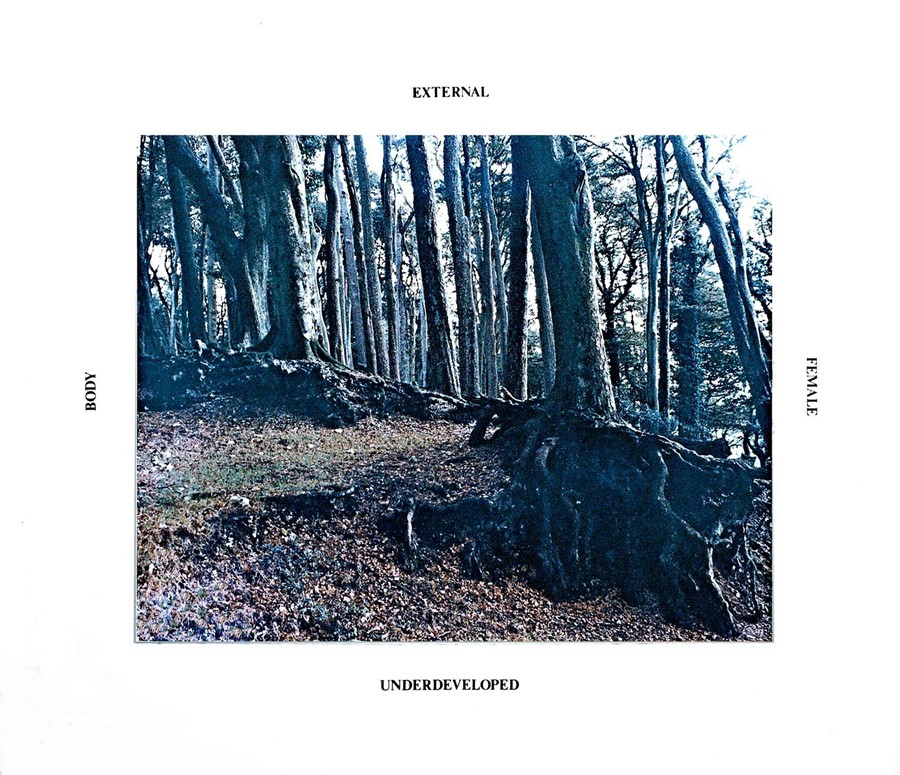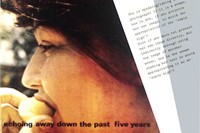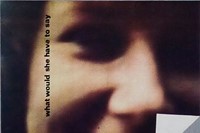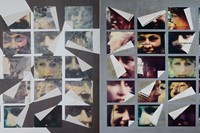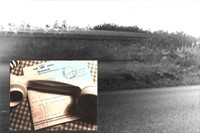A new exhibition at Richard Saltoun Gallery sheds light on the important but oft-overlooked conceptual artist, Marie Yates
Who? British artist Marie Yates (b. 1940) is a key pioneer of feminist conceptual art, best known for her landscape works combining installation, text and imagery to probe at issues surrounding representation, signification and sexual difference. She was mentored by John Latham, collaborated with Lucy Lippard on a major group show, and exhibited alongside The Artist Placement Group, but in spite of being highly regarded among her peers, Yates' work has fallen somewhat under the radar. Happily, a new exhibition at London's Richard Saltoun Gallery – her first solo exhibit in a private gallery – is putting Yates firmly back on the map, spotlighting her innovative investigations into the relationship between words, meanings and images.

What? Yates began her career as an abstract painter, spending the early 1960s creating striking minimalistic works from her studio in St Ives in Cornwall. Finding herself increasingly isolated and frustrated as a female artist in a male dominated world, however, she soon opted to study fine art at Hornsey College of Art, enrolling in September of 1968. There she rejected the prevailing influence of American Modernism and began to explore art in a societal context. She experimented with minimal installations that combined soft fabric forms, neon light and wind, documenting them on camera and presenting the photographs as the completed works. But she still felt affected by the limitations of her gender, turning to the writings of Lucy Lippard and Yoko Ono, and the burgeoning Conceptual Art movement, to inspire a greater (and more politically loaded) freedom of expression.
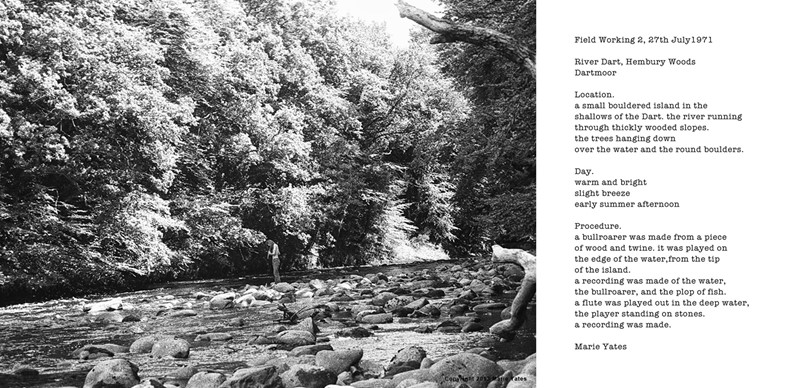
Towards the end of her studies, Yates began to use landscape in her work, her conceptual series of Field Workings (1971) pairing text and landscape imagery to make a direct link between the artwork and its context. One such piece, Field Working 2, 27th July, 1971, for example, sees the artist standing on the pebbled shore of what the acompanying text informs us is the River Dart, in Hembury Woods, Dartmoor, holding a wooden stick. It also provides us with a poetic description of the location, the day and the procedure, which involved the artist make the wooden "bullroarer" and recording the sounds of the river, the utensil and an accompanying flute.
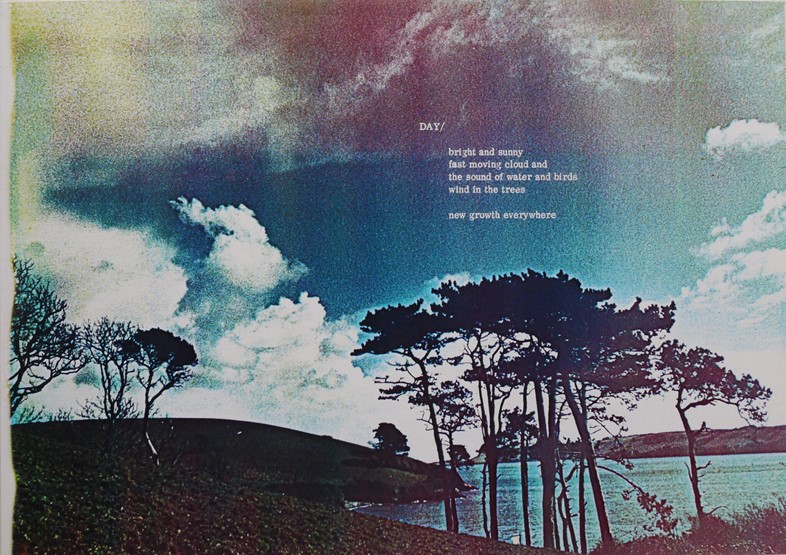
Yates continued to combine scenic views with words throughout the 1970s with the increasing purpose of probing at the role of both artist and artwork in society. She began to garner critical acclaim and small grants, going on to exhibit in the Artists Over Land show at the Arnolfini in 1975. By the late 70s, the artist had deemed that all art must be created with a view to political change, still using the key motifs of landscape and text as her principle subject matter. Her 1976 work Oppositional Frameworks 1 (from Signals 1974 -78) shows a light-strewn thicket of trees (the roots of the foremost shrub partially exposed), framed by four words: external, female, underdeveloped, body. Somehow the replacement of the female body with arboreal structures makes the impact of the text all the more powerful.

Why? Yates never explicitly spells out the intentions behind her works, preferring to leave them open to interpretation. “I hope that by throwing off the fixed meanings ascribed to art practices by the dominant ideologies of the media and the academy, these works may enable the observer to create new, more fluid meanings through the process of observation and independent thought," she tells AnOther. But some of her works are more pointed than others. In 1979, Yates was invited by Lucy Lippard to exhibit in the group show ISSUES at London's ICA and her resulting piece, titled Image/woman/text, saw Yates take a new direction, this time overlaying women's faces with text to "explore social preconceptions about photographic images of women, the way they are made, and their meanings." "Who is speaking/taking the photograph?" one text demands. "If it is a woman, how is she, if she presents her own image, to avoid the appropriation of the ‘empty sign’?”
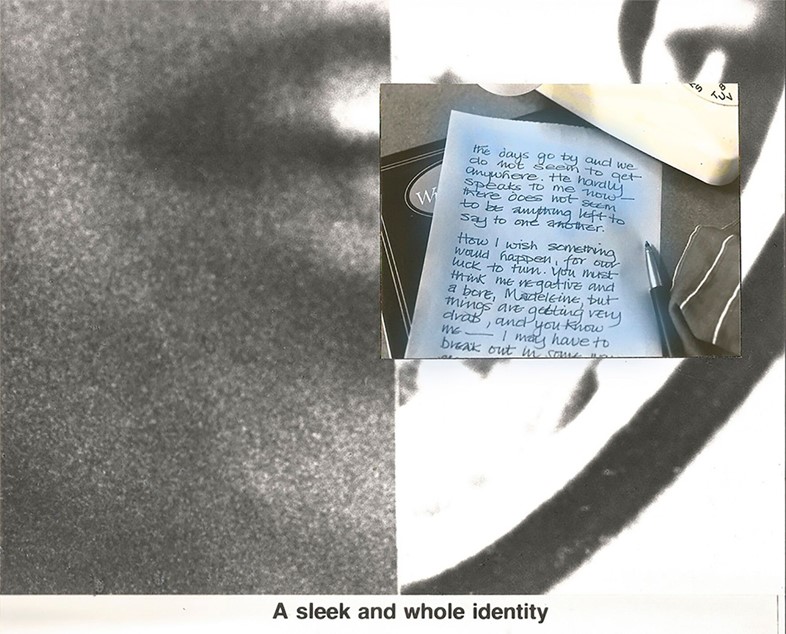
Thereafter, Yates continued to question the power of the image in the construction of identification and sexuality, with her projects The Missing Woman (1982) and The Only Woman (1985) delving deeper into the concept of female representation. "I also hope that the visitor to these works will find, particularly in the feminist avant-garde work, the articulation of 'the feminine', not as an essential experience but, as a representation constructed in discourse," Yates explains, shedding light on her ambitions for such works.
Yates was one of the first female conceptual artists and as a result has been frequently subjected to scrutiny and misinterpretation. The Richard Saltoun exhibition is an important opportunity to reassess her ideas (still very much relevant today) and to understand her legacy as a champion of feminist ideology. "Marie Yates is a woman working with landscape," art historian Fenella Crichton once noted. "Radical ideas do not fit easily into this framework, because we are deeply riddled with prejudices about both women and landscape," – which is exactly why Yates' work should be celebrated for its courage and originality.
Some Dimensions of my Lunch: Conceptual Art in Britain: Part 2: Marie Yates runs from June 24 until July 22, 2016 at Richard Saltoun Gallery, London.
